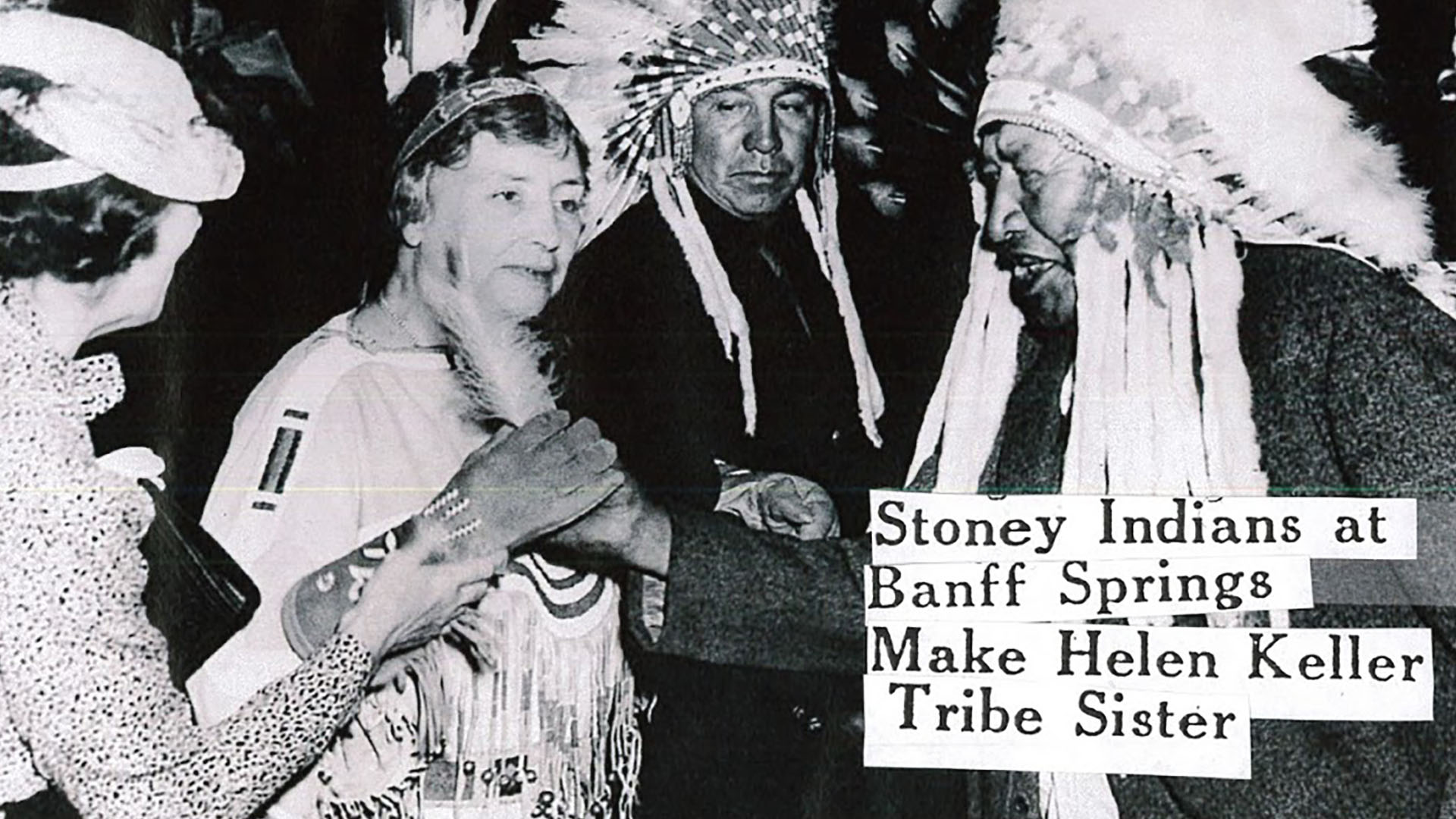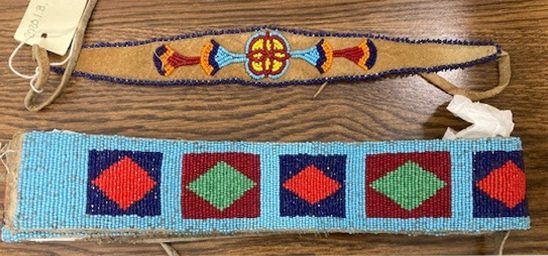Environment: dev.aph.org — Current roles: guest
 Helen Keller and the Stoney Nakoda Nation
Helen Keller and the Stoney Nakoda Nation
In September of 2021, the AFB Helen Keller Archive received a handful of Helen Keller artifacts that had been discovered after our initial January 2020 collection move to Kentucky. The inventory that accompanied them, named “Misc. items to APH,” contained a vague entry:
Helen Keller items
- Native American feather (part of HK’s American Indian clothing?)
In the shipment were two feathers, packed with a note reading “Indian [sic] Head Dress?” But with so little to go on, I wondered if the feathers might just have been orphan objects that someone found sitting around, rather than artifacts from the AFB Helen Keller Archive.
We began to explore the collection. There were several Native American items in the Archive, including a Native American deerskin dress and two pairs of moccasins. From his work rehousing the Archive, Museum Director Mike Hudson also knew that the collection contained a beaded headband and belt that were not digitized for the catalog.

All of these items had been attributed to the Pawnee Nation in Oklahoma. A certificate and letter in the archive showed that Helen Keller was given an honorary membership to the Pawnee Nation in 1960. But an acceptance speech in the same folder showed that, in 1939, she had been previously been inducted into the Stoney Nakoda Nation. And finally, the folder contained a hand-written memo that seemed to be an inventory of all of the Native American artifacts in the collection. Thankfully, the two feathers were listed along with the rest of the artifacts. Part of the mystery had been solved – the feathers did belong in the collection after all. But a search of the Archive had also brought up a newspaper article showing Helen wearing that “Pawnee” dress, but at a ceremony with the Stoney Nakoda Nation! Further, she was also very clearly wearing one of the feathers in a beaded headband, while being presented with the other.
Searching outside of the catalog brought up a photograph that showed that the feathers, dress, headband, and belt had all been worn by Helen at the 1939 initiation into the Stoney Nakoda Nation rather than having come from the Pawnee. It was a hard distinction to make at first. The camera flash had changed the appearance of the color of the shiny glass beads on the belt and the headband. But the higher contrast image made it clear. The provenance of these latest artifacts had gone from “Indian Head Dress?” to photo documentation of the artifacts being worn by Helen Keller at the Stoney Nakoda ceremony in 1939. Unfortunately, the origin of the two pairs of moccasins is still a bit of a mystery. Assumptions can continue to be made, but that has clearly caused some misattribution in the past. Further, the two pairs look to be made of slightly different styles, skins, and sizes, and neither of the patterns matches each other or the dress without a doubt. But I have the feeling that the answer to the moccasin mystery may yet come out of some further research.
Justin Gardner is the Helen Keller archivist at APH.
Share this article.
Related articles
In my work cataloging the materials in the AFB Helen Keller Archive, I’ve come across hundreds of folders with the...
When I started working in the AFB (American Foundation for the Blind) Helen Keller Archive at APH in October of...
Museum objects and their stories are codependent. The artifact is the real deal. After all, it was there when history...
